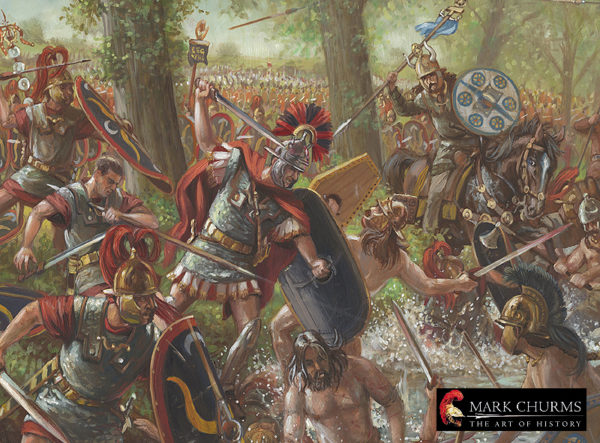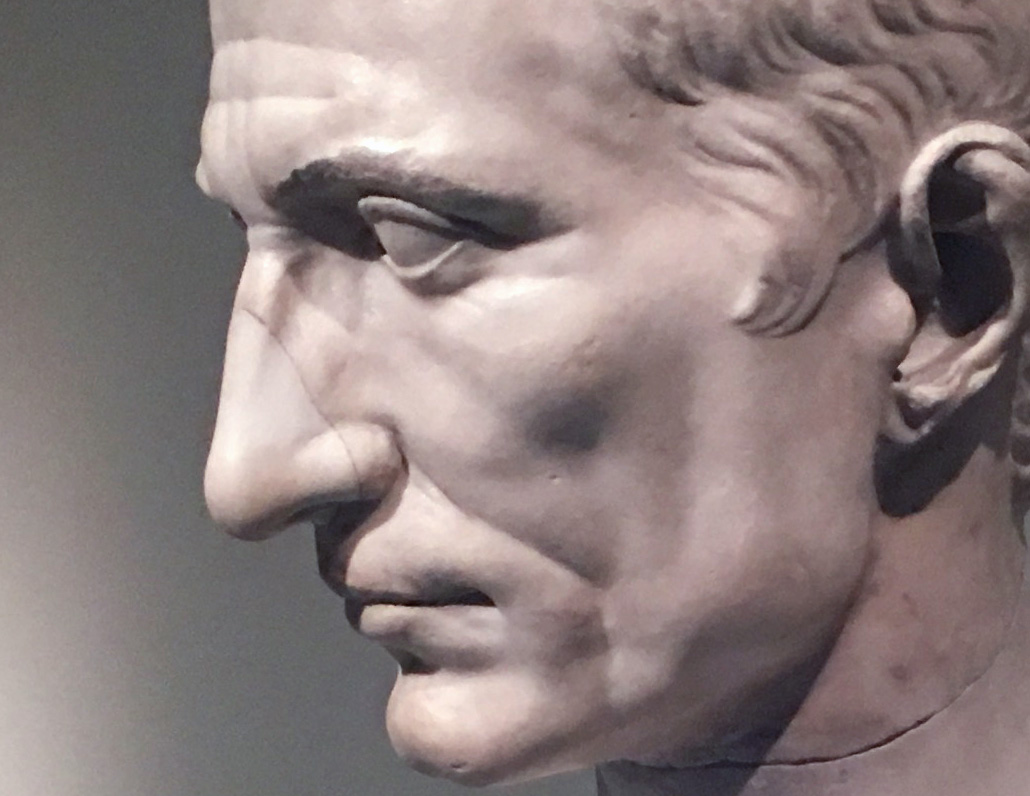Inspired by the “Battle of the Bastards” episode from Game of Thrones, we are looking at ancient accounts of bodies piling up during battle.
Caesar’s account of the Battle of the Sambre (57 BC) provides one of the only ancient eyewitness accounts of bodies piling up in battle. ((The Latin is Sabis. Sambre is the most common river that modern scholars associate with this battle.)) After a day’s march in Gaul, his men began to set up camp when a Belgic tribe known as the Nervii attacked. In a haphazard battle that Caesar described in detail, he performed multiple duties including hoisting a flag, blowing a trumpet, arranging and ordering men, and fighting on the front lines.
Although overwhelmed at first, the Romans eventually gained the upper hand. However, the Nervii would not stop fighting. Caesar tell us
The enemy, however, even at this critical moment showed such determination in their bravery that when those in the front rank had fallen the men behind them stood upon the slain and continued the fight from on top of the corpses. When they were overthrown the pile of bodies grew higher, while the survivors used the heap as a vantage-point for throwing missiles at our men, or catching their spears and throwing them back (Gallic War, 2.27).
From this description, we again lack a precise height for the pile of bodies, but it started small and continued to grow until the Nervii could use it for cover. So does that mean the Nervii could squat behind it for cover? Or does that mean they could stand and throw spears over it while remaining covered? Caesar seems to indicate the latter. We can be confident that Caesar wanted us to know that the bodies of men became a feature, a barrier on the battlefield.

Caesar, like others writing about their defeated enemies in the ancient world, had a habit of propping up opponents. The Nervii were particularly ferocious and Caesar tells us
they did not allow the import of wine and other luxury goods, because they believed such things enfeebled their spirit and weakened their courage. They were fierce men, and very brave, who reproached and condemned all the other Belgae for surrendering to the Roman people and casting aside their ancestral courage: they declared that they would send no envoys, and accept no peace terms (Gallic War, 2.15).
After describing the pile of bodies in the battle, he tells us
They were considered men of enormous bravery for good reason. For they had dared to cross a very wide river, climb its steep banks, and advance on extremely difficult ground: the Nervii’s courage had made light of these obstacles (Gallic War, 2.27).
Caesar’s men had defeated an enemy that braved a river, a steep bank, and difficult ground, only to fight on the corpses of their comrades. What better opponent for Caesar to demonstrate the fighting prowess of his own men?
The image of a pile of bodies was irresistible to Plutarch, writing more than 100 years later. He was less impressed with what he called “a disgraceful struggle” on the part of the Nervii. After the Romans “routed and destroyed” them, the Romans could cross lakes and deep rivers for the multitude of dead bodies in them (Caes. 20.3).” Plutarch usurps Caesar’s logical account of how a battle could produce a pile of bodies and transforms it into a heroic scene of a conqueror walking on the corpses of his enemies.
Another 100 years after Plutarch, Appian similarly described how Caesar killed so many of the Nervii, that he “crossed the stream on a bridge of their bodies” (Gallic History 1.4). The only other surviving ancient account of the battle comes from Cassius Dio who left out any mention of a pile of bodies (39.2-3). These obviously do not add any credibility to Caesar’s account, but they demonstrate how the image of corpses piling up could become even more dramatic in the minds of later historians.
Today, some modern historians are willing to accept Caesar’s account without question ((Michael Lovano, All Things Julius Caesar: An Encyclopedia of Caesar’s World and Legacy (Santa Barbara: Greenwood, 2015): 1:84; Philip Freeman, Julius Caesar (New York: Simon & Schuster, 2008), 151; Vickey Kalambakal, “Resting on a Knife-Edge: Caesar’s War Against the Belgae,” Ancient Warfare 2, no. 4 (2008), 18.)) or at least pretend as though it doesn’t exist. ((Each of these books has several pages and at least one tactical map of the battle, but fail to mention the pile of bodies. Perhaps that is their subtle way of treating it as fiction. Nic Fields, Julius Caesar: Leadership, Strategy, Conflict (Oxford: Osprey, 2010), 16-17, 20; J.F.C. Fuller, Julius Caesar: Man, Soldier, and Tyrant (New York: Da Capo Press, 1965), 110-115.)) However, Adrian Goldsworthy believes the story of men standing “on the mounds of their own dead to keep fighting” was “doubtless an exaggeration,” but it still somehow “testified to the ferocity of a combat that he had seen from particularly close quarters.” ((Adrian Goldsworthy, Caesar: Life of a Colossus (New Haven: Yale University Press, 2006), 244.)) Goldsworthy essentially wants us to believe that even though Caesar was embellishing, he only did it to emphasize that it was a fierce battle.
While it is possible that Caesar embellished the whole thing, he never described the phenomenon occurring in any other battle, making the Battle of the Sambre unique. Aside from the fact that his account is that of an eyewitness of the purported event, Caesar’s description is remarkable because he provides a blow-by-blow breakdown of how bodies could pile up in battle. This methodical account is what we’ve come to expect from the seasoned general and battle narrative writer. Thus, we either have the work of an experienced military mind describing a real phenomenon or, at least, his thoughts on how it could occur logically.

